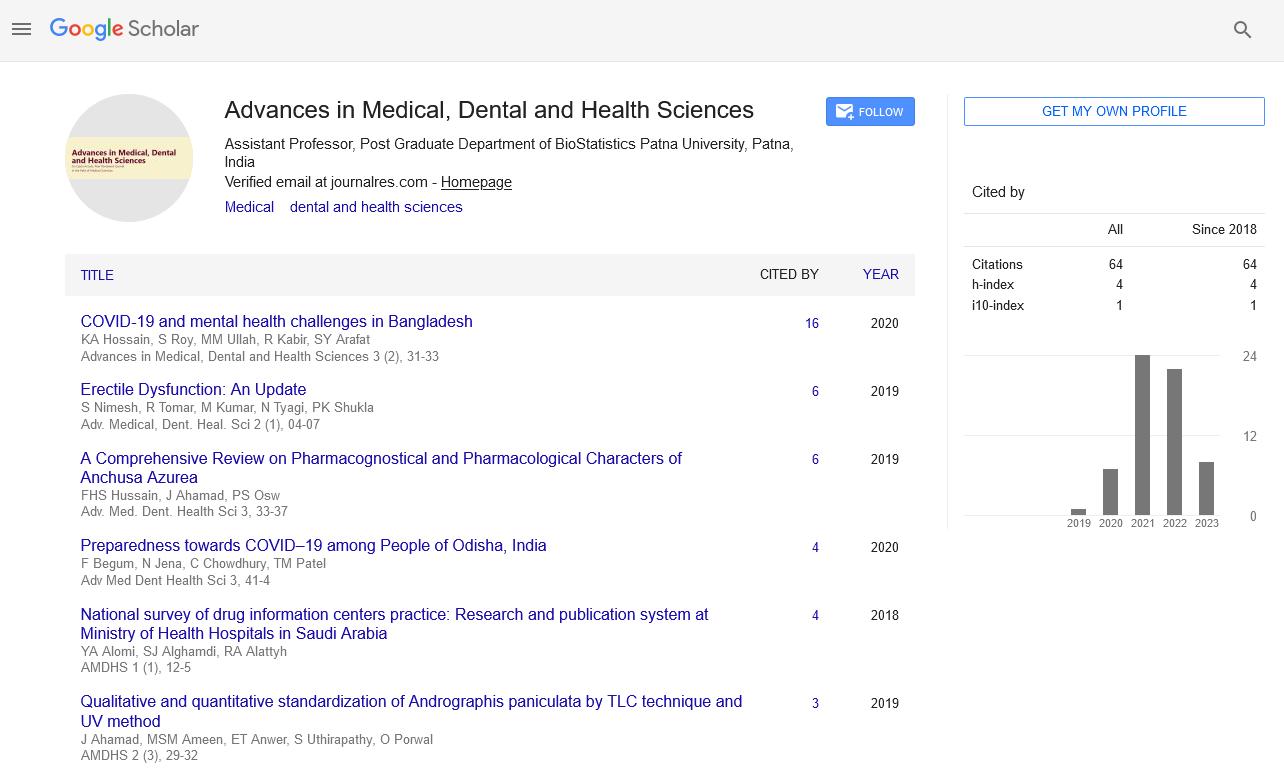Molecular Docking Simplified Literature Review
Abstract
Author(s): Sharique Ahmad, Shivani Singh, Mrinal Ranjan Srivastava, Shivangi Shukla, Silky Rai, and Adnan Saeed Shamsi
Molecular docking is the prominent method for structural analysis and designing of drugs which is assisted by computer programs. The aim of docking is to predict the binding between two molecule ligand and receptor when they bind to form stable complex. The ligand could be any macromolecule but mainly this method is performed with protein of known 3-D structure. Fruitful docking method utilizes a scoring function which appropriately ranks the docking candidates. It could be utilized for performing hypothetical screening of huge collection of diverse compounds which rank the results and proposes the hypothesis of process leading to ligand blockage to intended target which is not found appropriate for the process of lead optimization which aims to increase the promising compound for enhancing its effectiveness, decreased toxicity or enhanced absorption. Beside all this, the setup of input structure for docking is as critical as the docking itself. The evaluation of the result of algorithms which could perform a broad search of design space and ignores local optima named stochastic search could also few times found to be unclear. As molecular docking had become important for drug designing so the reliable theories for this includes sampling algorithms scoring function. The distinction among the docking software and approaches of molecular docking had been mention. Also recently developed docking software Local Move Monte Carlo (LMMC) is mentioned which provides potent solution towards flexible receptor docking programs. Beside all these things, applications of molecular docking have also been described. Docking is basically a process which identifies appropriate positions of molecule with other when bound together for forming stable orientation of complex. The understanding of suitable conformation may be utilized for predicting the power of involvement in affinity of binding among two molecules with the utilization of scoring which helps in predicting the binding capability between two molecules after they have been docked. The involvement of macromolecules biologically admissible like lipids, carbohydrates, protein performs significant function in cell signaling. Moreover, the comparable orientation among 2 binding molecules could also affect the kind of signal produced. Though docking is helpful for both providing strength and type of signal produced. This technique basically works both structural and computer assisted drug designing and to identify the binding in between ligand and protein in which three dimension structure of protein is already known. Successful method of docking identifies high dimensional spaces prominently and scoring function utilization results in appropriate ranking of candidate docking. Docking can also be involve in performing screening virtually on huge libraries of molecules and give the structural hypothesis of the process ligand inhibits the target which critically leads to optimization.
https://betist.fun https://betlike.fun https://betmatik.fun https://betpark.fun https://bettilt.club https://elexbet.fun https://extrabet.fun https://hepsibahis.fun https://kingbetting.fun https://maksibet.fun https://marsbahis.xyz https://matadorbet.fun https://pulibet.fun https://restbet.fun https://milanobet.fun https://supertotobet.fun https://vevobahis.fun https://imajbet4.com https://maltcasinocu.fun https://sekabetgiris.fun
